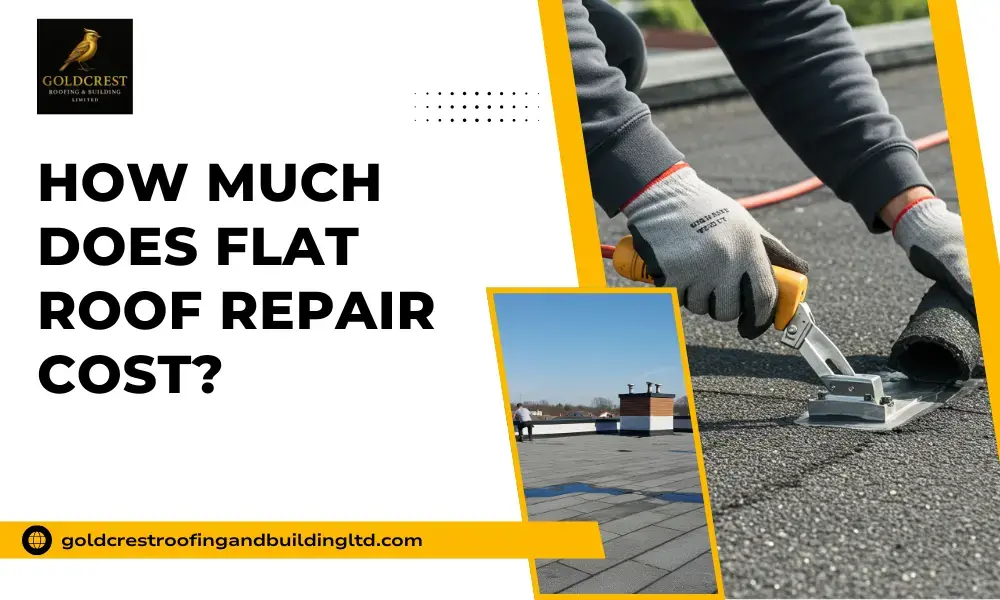Flat roofs may look simple, but when they start leaking or cracking, minor issues can quickly turn into costly problems. How much does flat roof repair cost? This is a common question for homeowners, and knowing the answer early can help prevent expensive damage. Water damage often hides beneath the surface, and the longer you wait, the worse it gets. A minor repair today might cost just a few hundred pounds, but ignoring it could result in thousands in costs for a full replacement. Let’s break it down so you know what to expect and how to avoid costly surprises.
Flat Roof Repair Costs
The cost of flat roof repair depends on the size and severity of the damage, as well as the materials used. Minor flat roof repairs, such as sealing small cracks or fixing a flat roof, typically cost between £200 and £500. These repairs can prevent water damage from spreading and help maintain the roof’s integrity. Acting early on small issues can save homeowners significant expenses compared to dealing with larger problems later.
Flat Roof Material Costs & Lifespan
Choosing the right material affects both your upfront cost and your long-term flat roof repair cost:
1. Felt: £40–£60 per m²
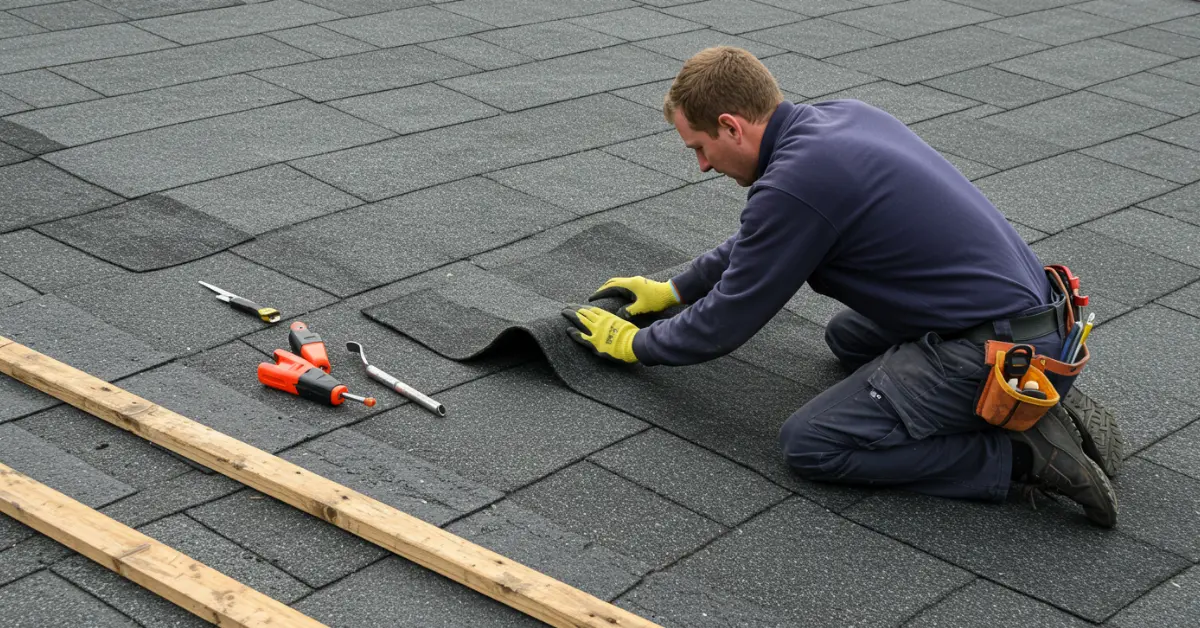
Felt is the most budget-friendly option and quick to install. It works well for smaller projects, such as sheds, garages, and modest extensions. However, its durability is limited, usually lasting only 10 to 15 years. In regions with heavy rain or intense sun, it may wear faster. Regular checks and patching are essential to avoid leaks and damage.
2. EPDM rubber: £70–£90 per m².
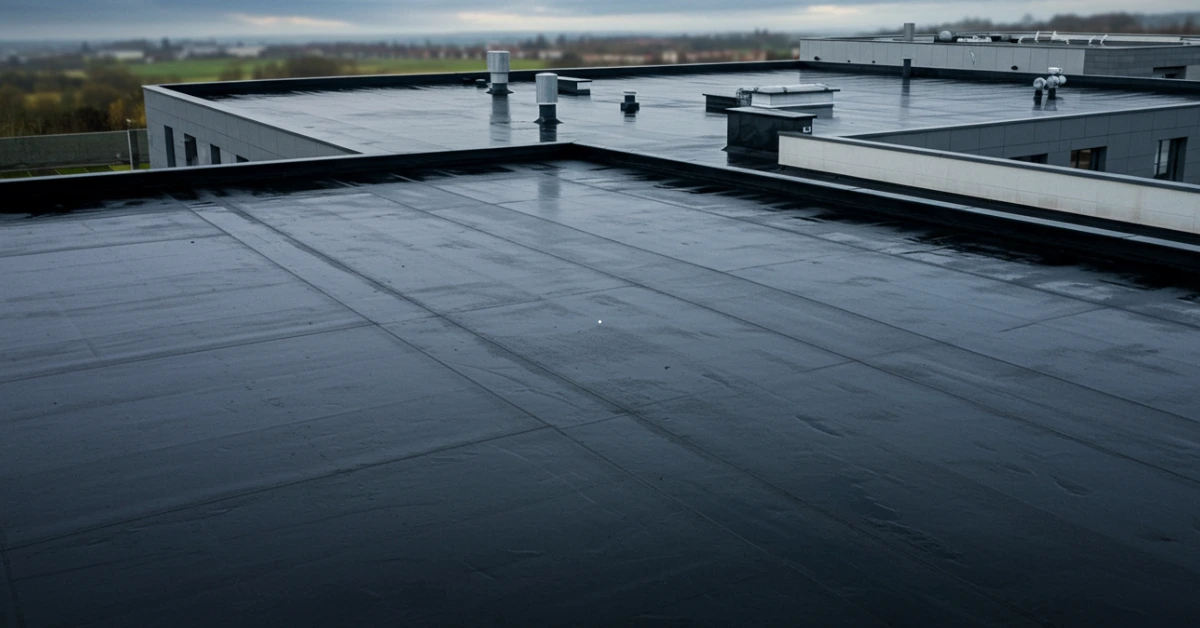
EPDM is a highly reliable flat roofing material. Its flexibility and resistance to UV rays make it ideal for changing weather conditions. With minimal maintenance, EPDM can last 20 to 30 years. Homeowners appreciate that it can often be repaired without replacing the whole roof, reducing long-term costs and preventing leaks before they become serious.
3. GRP fibreglass: £90–£120 per m².
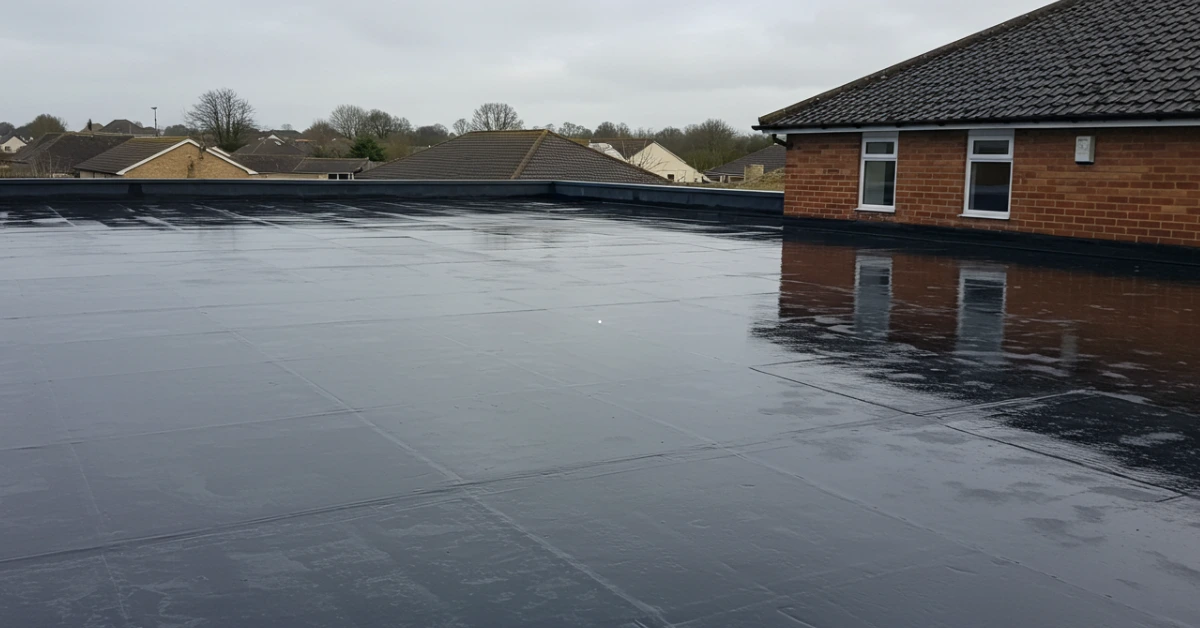
GRP offers a premium, seamless, and hard-wearing surface. It’s resistant to fire, water, and impact, which makes it one of the most durable options. Installed correctly, it can last over 30 years with minimal upkeep. Its smooth surface is easy to walk on, ideal for flat roofs that double as terraces or garden spaces.
For a deeper comparison of which option might best suit your home, check out our guide on flat roof materials.
What Affects the Cost of Flat Roof Repair
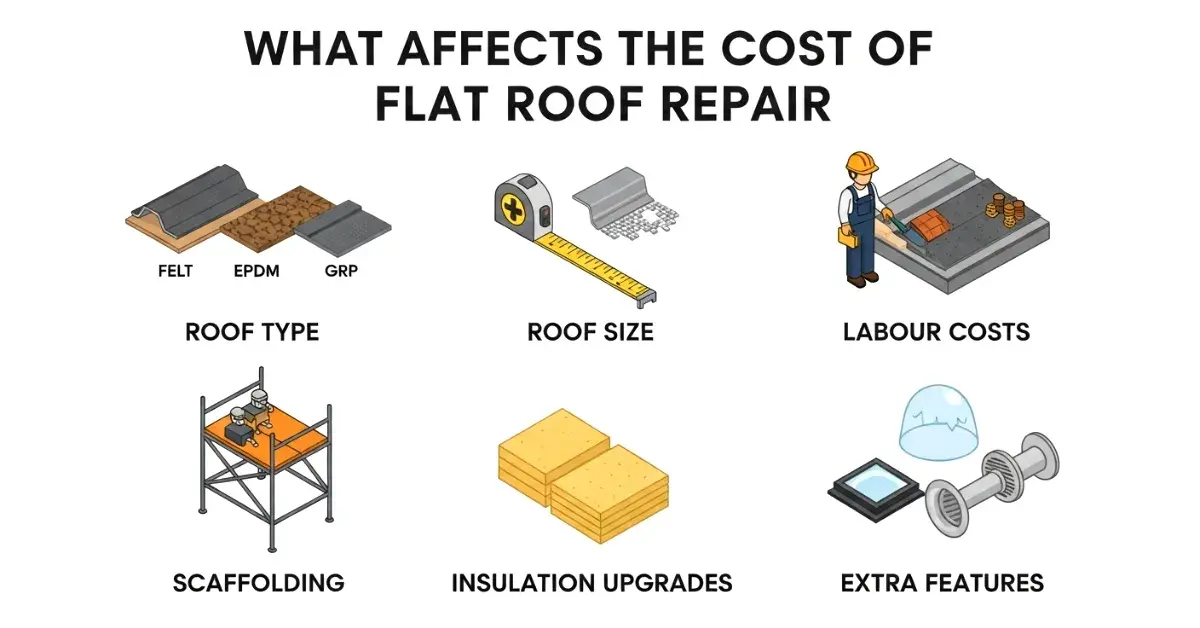
Several key factors shape the final flat roof repair cost or the price of a complete replacement:
1. Roof type:
Felt is the most budget-friendly, while fibreglass (GRP) and rubber (EPDM) sit at the higher end. The type you choose impacts both the upfront cost and the frequency of future repairs. Higher-quality materials cost more initially, but they reduce long-term maintenance expenses.
2. Roof size:
Larger roofs require more materials and longer labour hours, often necessitating the use of scaffolding. Even a slight increase in roof size can noticeably raise costs when calculated per square metre.
3. Roofing materials:
The durability of materials affects both initial investment and long-term repair costs. EPDM rubber can last decades with minimal upkeep, whereas felt may need replacement sooner. Investing in higher-quality materials can save money over time.
4. Roof condition & complexity:
Roofs with poor access, multiple joins, chimneys, or hidden water damage require more work. Complex designs increase labour costs because roofers need extra time and skill to complete the repairs correctly.
5. Insulation upgrades:
Adding or improving insulation increases upfront costs but can lead to improved energy efficiency, lower heating bills, and reduced condensation problems, ultimately making it a long-term benefit.
6. Extra features:
Skylights, roof vents, and specialist drainage systems improve comfort and performance but also add to the overall cost. Each feature requires additional materials and skilled installation. Extra features, such as skylights or specialised drainage systems, increase the repair cost of a flat roof.
Knowing these cost factors helps homeowners plan their budget properly and avoid surprises when fixing a flat roof.
Flat Roof Cost Breakdown
Understanding flat roof repair costs can help homeowners plan their budget and avoid expensive surprises. When repairing a flat roof, the expenses usually fall into a few main areas:
1. Materials for Flat Roof Repairs: £50–£150
This covers sealants, patching felt, small sheets of EPDM or GRP, adhesives, and waterproofing products. The choice of material affects both the durability and the repair cost of a flat roof.
2. Labour for Flat Roof Repair: £100–£250 per day
Skilled roofers charge based on the complexity and size of the job. Simple flat roof repairs, such as sealing minor cracks, are quicker, while multiple leaks or difficult access can take longer.
Hiring experienced roofers makes sure the repairs are done correctly and last longer. Learn more about our roof repair services for professional assistance.
3. Scaffolding or Safety Equipment (if needed): £50–£200
For higher or hard-to-reach roofs, scaffolding or ladders provide a safe means of access. This is an occasional cost in flat roof repairing projects.
4. Tools and Consumables: £10–£50
Small items like brushes, rollers, gloves, and tapes used during fixing a flat roof contribute a minor part to the overall roof repair cost.
By understanding these components, homeowners can get a realistic flat repair cost estimate. Acting early to repair a flat roof not only reduces the risk of water damage but also helps avoid larger expenses associated with full roof replacement.
Extra Costs for Flat Roof Repairs
Not all expenses appear in the initial quote. Some hidden costs to watch for include:
- Emergency call-outs: £100–£200 for urgent jobs, especially during storms or heavy rain.
- Building regulations: If you are replacing more than 25% of your roof or adding insulation, inspections or additional paperwork may be required.
- Hidden damage: Rotten timber, damp insulation, or damaged joists can add £300–£1,000 to your final repair cost.
- Asbestos removal: Older garages may contain asbestos sheets that require specialist handling, which can result in increased disposal fees.
- Extended hire: Bad weather delays may add extra days of scaffolding or skip hire, costing £100+ per day.
- Planning permission: Usually not required unless the roof shape, height, or drainage is changed. Listed or conservation properties may need council approval.
Always request a full cost breakdown before work begins to avoid surprise charges.
Conclusion: How much does flat roof repair cost?
If your roof can’t be patched, understanding the cost of flat roof replacement helps you plan effectively. Minor repairs might cost a few hundred pounds, but full replacements can run into thousands. Waiting too long only worsens the problem. Knowing the flat roof repair cost allows you to budget wisely and protect your home from bigger issues. Acting early could save thousands and preserve your property’s value and safety. For reliable flat roof work, consider hiring experienced roofers Near Lewisham who can provide accurate assessments and quality repairs.
FAQs
How long does a flat roof last in the UK?
Felt roofs usually last 10 to 15 years. EPDM rubber and GRP fibreglass can last 20 to 30 years, or even longer with proper care. Material choice plays a major role in maintenance frequency.
Is it cheaper to repair or replace a flat roof?
Repairing a flat roof is cheaper upfront, sometimes just a few hundred pounds. Older roofs with multiple leaks may be more cost-effective to replace than those with fewer leaks. Constant patching can quickly add up. This explains the typical cost of repairing a flat roof versus replacement.
Can I repair a flat roof myself?
Small DIY fixes, such as sealing minor cracks, are possible, but larger jobs require professional expertise. Mistakes with waterproofing can lead to costly damage in the future.
When’s the best time for flat roof repairs?
Spring and autumn are ideal. Mild weather avoids delays and lowers costs. Summer is busy, and wet winter conditions can slow work, making repairs more expensive or risky.

